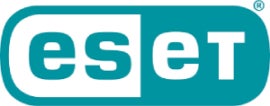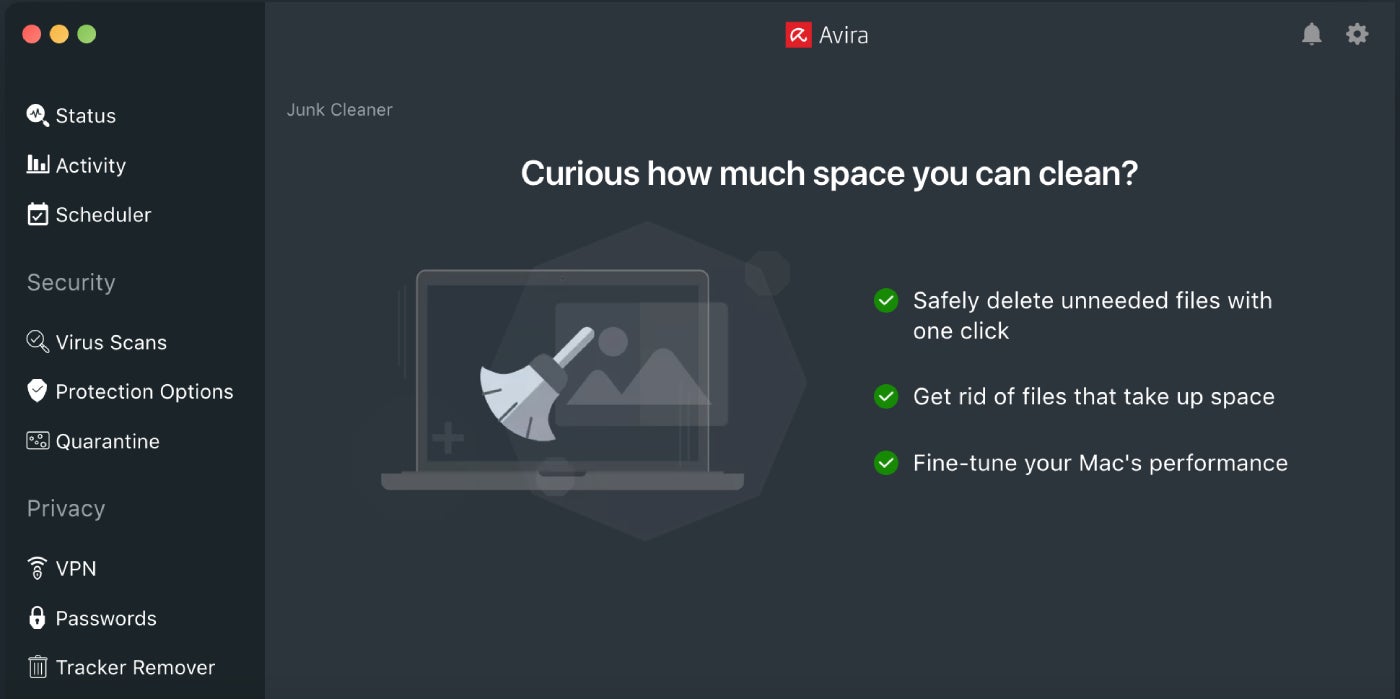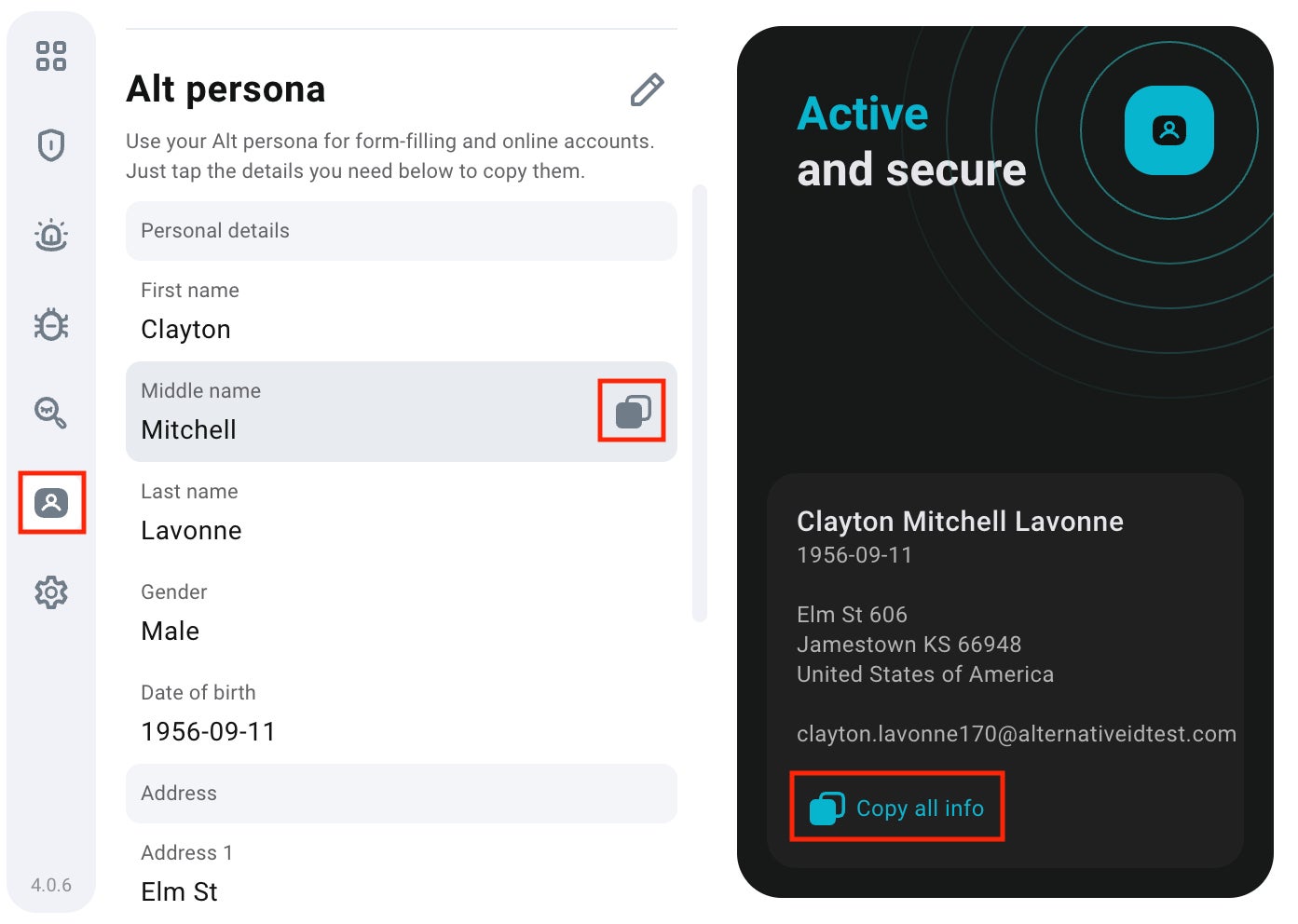
People often ask if Macs really need antivirus software, both because of a misconception that Apple devices are “virus proof” and because macOS already comes with a built-in AV.
In truth, a Mac’s tightly controlled operating system and sandboxed apps are harder to breach than Windows systems, but it’s not entirely immune to threats. And while Mac’s built-in antivirus software, Xprotect, provides perfectly adequate protection for home users, it lacks advanced security features, centralized management, and reporting, which is limiting in businesses and other large organizations.
In this article, I compare the six best antivirus software providers for Mac based on protection capabilities, ease of use, and performance to help you choose the right option for your business.
Every antivirus for Mac offers protection from malware including viruses, trojans, and spyware, and many of the providers on this list include this service in a free version of their software. The options I chose also provide additional security features like a VPN to enable private browsing and ransomware protection to prevent unauthorized changes to important files. Two of the most important features for businesses, however, are a centralized platform to manage AV across the organization and multi-device plans that offer discounts for protecting more than one Mac.
| Starting price | Centralized management | Multi-device plans | Ransomware protection | VPN | |
|---|---|---|---|---|---|
| Bitdefender | Free, or $59.99 per year for up to 5 devices | With Small Office plan | Yes | Yes | Yes |
| Malwarebytes | Free, or $44.99 per year per device | With Teams plan | Yes | Yes | Yes |
| Avast | Free, or $31.19 per year for one device | With Essentials plan | Yes | Yes | No |
| ESET | $34.99 per year for one device | With EDR plan | Yes | No | Yes |
| Avira | Free, or $26.99 per year for 1 device | No | Yes | Yes | Yes |
| Surfshark | $36.26 per year per device (24-month subscription) | No | No | No | Yes |
Bitdefender provides a wide range of antivirus products for Mac, including a free on-demand virus scanner that’s accurate and easy to install, use, and remove. Paid plans add automatic threat detection (including adware and ransomware) and a VPN, as well as protection for Time Machine backups. For small businesses with less than 10 Macs, I recommend the Small Office Security plan, which unlocks access to a centralized, cloud-based management portal for a very reasonable price. Overall, Bitdefender provides a great balance of protection, features, and usability, which is why it earned a perfect score in AV-TEST’s most recent analysis.
Bitdefender offers a great selection of AV products to fit any business size or use case. It earned perfect 6/6 AV-TEST scores for protection, performance, and usability, and the company has a stellar reputation in the IT industry.
SEE: Best Mac Password Managers (TechRepublic)

| Pros | Cons |
|---|---|
| Offers centralized management at an affordable price. | Some AV products are Windows-only. |
| Provides enterprise-grade solutions for larger companies. | Offers so many products and plans that it can be confusing to find the right one. |
| Includes free version and 30-day free trial of paid plans. |

Malwarebytes first gained popularity in the IT field for providing a free scanning utility that is adept at catching unusual malware other antivirus tools miss. Both its free and paid software are compatible with other AV and security tools (including Xprotect), so you can double-up on protection or run on-demand scans to clean up after a known virus infection. Malwarebytes also works great as a standalone AV solution, with paid plans that include extra features like phishing and rootkit protection and a VPN. There’s even a Teams plan that provides centralized management, monthly security reports for auditing purposes, and priority business support.
SEE: 6 Best Open Source Password Managers for Mac in 2024 (TechRepublic)
Malwarebytes plays nicely with other antivirus solutions, so it’s a nice supplemental AV for users who need extra protection, such as journalists doing research on the Dark Web. It’s also known for catching unusual threats that other solutions miss, so it’s great for cleaning up after a known infection or breach.

| Pros | Cons |
|---|---|
| Works well with other AV solutions. | Paid plans can be pricey. |
| Catches unusual threats other tools miss. | No multi-device discounts unless you upgrade to a Family or Teams plan. |
| Provides monthly security reports for audits. |

Avast is an AV provider for Mac that offers perhaps the most comprehensive free solution on the market. Free users get an on-demand scanner, automatic firewall, browser, email, and ransomware protection, and a utility that scans Wi-Fi networks for vulnerabilities. Paid plans are also very reasonably priced, and businesses can gain centralized management capabilities starting at just $31.37 per year. The app itself is very easy to install and use regardless of technical ability.
SEE: The 7 Best iPhone VPNs (TechRepublic)
My only caveat in recommending Avast is that the company was recently fined by the FTC for improperly collecting and selling user data.
Avast provides a comprehensive free antivirus option that includes extra features you won’t get with XProtect. All versions of the AV app are easy to install and use, with intuitive interfaces even beginners can master with ease.

| Pros | Cons |
|---|---|
| Comprehensive free software with lots of extra features. | Fined for selling customer data. |
| Affordable paid plans with centralized management. | No VPN offering. |
| Intuitive, beginner-friendly app. |

ESET offers a full range of security products for Mac, including its popular, no-frills NOD32 antivirus that provides real-time and on-demand protection. You’ll need to upgrade to a Premium or Ultimate plan to get extra features like a password manager, VPN, and identity theft protection. Centralized management isn’t available unless you go with one of the ESET PROTECT XDR (extended detection and response) plans. ESET doesn’t offer a free utility, and all of its products are on the expensive side. You can, however, add more devices to any plan (including NOD32) for a steep discount, which isn’t the case with many other options on this list.
SEE: 20 Mac Terminal Commands Every User Should Know (TechRepublic)
ESET provides AV and security products to meet a wide variety of business needs, including an enterprise-grade XDR platform. You can also add an unlimited number of devices to even the most basic AV plan at a steep discount compared to other options.
| Pros | Cons |
|---|---|
| Can add unlimited devices to any plan. | Pricing is high for the category. |
| Offers enterprise-grade XDR for large companies. | Resource-intensive app could slow down your device. |

Avira is unusual among free AV tools in that it provides real-time protection in addition to on-demand scans, which means it actively scans files and applications for viruses without any user intervention. Avira also offers a paid plan that includes anti-phishing, ad blocking, and ransomware protection for an affordable price. When I installed the Avira app, I was able to select from a large selection of free add-on features and integrations, including a VPN, a secure password generator, and a cloud sandbox analyzer that allows you to execute suspicious files in a safe environment to test for malware before running them on your Mac. What I especially liked was that I could choose not to install extra features that I don’t need, saving space and reducing performance impacts.
SEE: 5 Tips for Securing Data When Using a Personal Mac for Work (TechRepublic)
Avira offers a lot of free add-on features that you usually only find in enterprise-grade solutions. The installer lets you pick-and-choose which features to install, so you can create a customized security solution for your Mac.

| Pros | Cons |
|---|---|
| Comprehensive free AV option. | No centralized management. |
| Highly customizable app with lots of free add-ons. | Doesn’t provide solutions for larger organizations. |

While Surfshark is mostly known for its VPN service, it also offers AV capabilities as part of its Surfshark One security platform. The app is very lightweight, installing quickly and running without taking up too many processing or memory resources. I could easily run a scan while simultaneously using resource-intensive applications for gaming, video streaming, and even VR. While Surfshark lacks features like centralized management, multi-device discounts, and ransomware protection, all plans do include unlimited use of its top-rated VPN service.
Surfshark’s lightweight application won’t slow down your device, making it a great option for use cases where performance is the top priority. All Surfshark One plans also include a premium VPN service for no extra charge.
SEE: How to Run a Cybersecurity Risk Assessment in 5 Steps (TechRepublic Premium)

| Pros | Cons |
|---|---|
| Lightweight app won’t impact performance. | No centralized management. |
| Includes unlimited premium VPN service. | Lacks business-grade features. |
Before choosing an AV, it’s important to consider your reasons for replacing (or supplementing) the built-in Xprotect antivirus utility.
If you have a lot of Mac users in your environment and need a way to centrally manage security for all of them, then a business-focused solution like Bitdefender or ESET is your best bet. If you need a rescue tool to thoroughly clean up after a virus infection or ransomware attack, Malwarebytes is an excellent choice because it works alongside other AV solutions. For budget-conscious businesses without many Mac users, Avast and Avira offer comprehensive protection with cool bonus features. If you’re looking for a premium VPN service with AV capabilities built-in, then Surfshark One offers the most affordable all-in-one plans.
Overall, Bitdefender offers the best balance between protection, features, and cost, with products to meet the needs of nearly any business.
I chose the providers on this list because they each provided a unique set of features for Mac devices. I compiled protection, performance, and usability data from AV-TEST and read real customer reviews from forums like Reddit. I thoroughly reviewed public-facing product pages and, when possible, downloaded free trial versions to test individual features. In some cases, I have first-hand experience using these products in a professional capacity, which I supplemented by reading industry forums and publications to assess their capabilities from an IT management perspective.